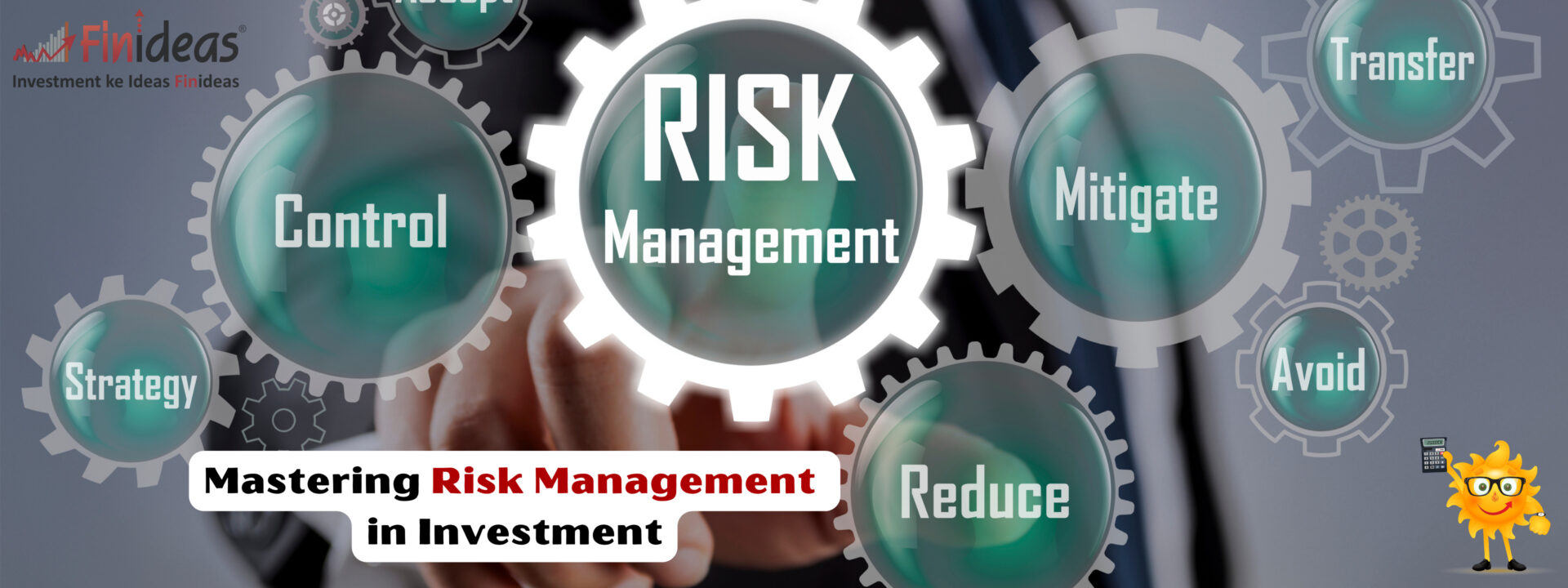"Risk Management in Investment"
Introduction
Hello Friends! Welcome back to FINIDEAS! Today, we’re delving into a critical aspect of successful wealth building: “Risk Management in Investment.” In an ever-evolving financial landscape, understanding how to effectively navigate risks while investing is a cornerstone for achieving your financial goals. Join us in this engaging episode as we explore the fundamental principles of risk management and equip you with valuable strategies to safeguard your investments.
Understanding Investment Risks
Market Risk: Navigating Volatile Terrain
Before we dive into the various types of risks, let’s first comprehend what risk truly is. In the context of investments, risk is the potential deviation between actual and expected returns. For instance, if we invest Rs. 100 with an expectation of earning Rs. 20 in a year but end up receiving only Rs. 15, the difference of Rs. 5 represents the risk.
Now, let’s talk about different types of risks that can impact your investment decisions.
1. Market Risk: This risk emerges from changes in overall market conditions, affecting all investments. Economic downturns, geopolitical events, and interest rate fluctuations can trigger adverse price movements, impacting the value of investments.
2. Specific Risk (Company Risk): This risk pertains to individual company performance. Factors such as rising raw material costs, business expenses, and competitive products can influence a company’s financial stability.
3. Liquidity Risk: This risk arises when an investment can’t be quickly converted to cash without significant loss. Examples include properties, shares with low trading volumes, and securities with lock-in periods.
4. Credit Risk: Also known as default risk, this arises when a borrower or issuer fails to meet payment obligations. It’s common in bonds, debentures, and loans. Researching fund ratings and company fundamentals can help mitigate this risk.
5. Inflation Risk: Inflation erodes the purchasing power of money over time, impacting real returns on investments. To combat this, invest in assets that have the potential to outpace inflation, like index funds, gold, and real estate. To beat this risk you need to know about Index Long Term Strategy and Alternative Investment Fund.
Strategies for Risk Management
1. Diversification: Spread your investments across various asset classes, industries, and regions to minimize the impact of specific risks. Know About Index Long Term Strategy as you need to know the diversification it has.
2. Asset Allocation: Allocate investments based on your goals, risk tolerance, and time horizon. Balance stocks, bonds, real estate, and cash.
3. Stop-Loss Orders: Consider setting stop-loss orders for individual stocks. These automatically sell a position if it reaches a predetermined price, limiting potential losses.
4. Risk-Adjusted Returns: Evaluate investments based not only on returns but also on the level of risk taken to achieve those returns.
5. Regular Reviews: Monitor your portfolio regularly and make adjustments to align with your goals and risk tolerance.
Common Mistakes to Evade
- Emotional Decision-Making: Base investment decisions on rational analysis, not fear or greed.
- Ignoring Diversification: Diversify to reduce unnecessary risk; avoid concentrating funds in a single investment or sector.
- Chasing High Returns: Be cautious of investments promising high returns without considering associated risks.
Conclusion
And there you have it! Risk management in investment is a fundamental pillar of successful wealth creation. By understanding various risks, implementing sound strategies, and avoiding common pitfalls, you can confidently navigate the financial markets.
Remember, continuous education, staying informed about investment trends, and consulting a financial advisor are key to tailoring your risk management approach to your unique situation.
On scale on 1 to 10 how much you understand risk management in investment?
1 = don’t understand at all and 10 = Understand very well , Comment down below you answer.
Happy Investing!

